Audi Q2 review

At a glance
| Price new | £29,765 - £50,670 |
|---|---|
| Used prices | £7,608 - £39,627 |
| Road tax cost | £20 - £620 |
| Insurance group | 13 - 39 |
Get an insurance quote with

|
|
| Fuel economy | 32.8 - 60.1 mpg |
| Range | 495 - 748 miles |
| Miles per pound | 4.8 - 7.7 |
| Number of doors | 5 |
| View full specs for a specific version | |
Available fuel types
Petrol
Diesel
Pros & cons
- Impressive interior quality
- Great to drive
- Strong residual values
- More expensive than most rivals
- Interior is really starting to feel old
- Lacks technology of newer cars in this class
Audi Q2 SUV rivals
Overview
The Audi Q2 might now be one of the oldest small SUVs you can buy, but it remains an important car, and is one of only a handful of cars in this class that sit at the more premium end of the scale.
The smallest SUVs from rivals BMW and Mercedes are both considerably larger and more expensive than Audi’s Q2, which sits between its A1 and A3 in terms of size, and works neatly around the city. It’s proven popular as a result – and remains so – but there’s no hiding this is now an old car.
Based on Audi’s previous-generation A3 hatchback, the Q2 was first introduced in 2016, and it has only had one noteworthy update back in 2020 when it received a tweaked interior design, additional technology and more standard equipment. Audi is set to discontinue its Q2 in 2026, alongside the A1 supermini, with no immediate successor planned for either. That is a shame because it still has some superb attributes, including a higher-quality interior than any car in this class, strong residual values and a decent driving experience.
Being an even-numbered SUV means the Q2’s aiming for style over practicality, but its boxy body is still as useful as any hatchback. It has many rivals in this ever-competitive market segment but instead of more mainstream opposition like the Ford Puma and Nissan Juke, it aims higher. Its closest natural rival used to be the previous-generation Mini Countryman, but the latest car has grown significantly in size to the point it can’t really be considered a competitor. And neither can the Mercedes GLA or BMW X1, they’re too big as well.
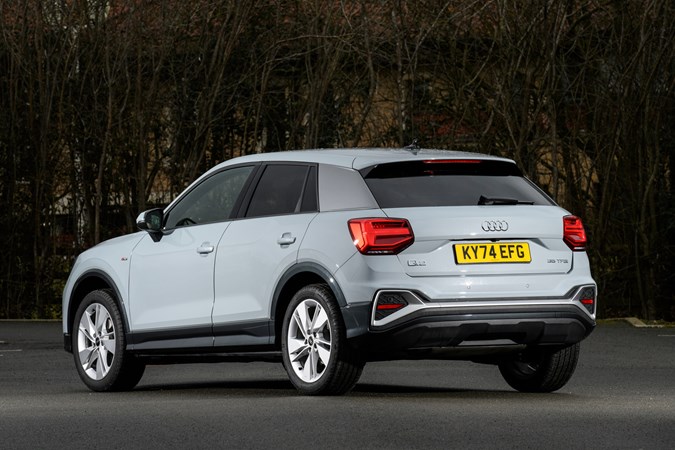
Instead, posh small SUV rivals consist of the hybrid Lexus LBX or the quirky DS 3. We also recommend looking at the Volkswagen T-Roc. If you’re happy to consider something electric, the Volvo EX30 is a great choice and costs similar money to the Q2.
With a wide range of punchy, if conventional engines, a well-made interior and plenty of options to make the exterior and interior of your car as individual as you like, the Q2 is still a very attractive car to buyers who want to stand out without having to sacrifice practicality or usability.
We’ve driven the Audi Q2 and SQ2 extensively, and you can find out more about how we test on Parkers via our dedicated explainer page. Here’s what we found when we tested all versions of the car on some of the country’s most demanding roads.
Practicality
The Audi Q2 is a compact SUV and, at less than 4.2m in length, it’s considerably shorter than an Audi A3 Sportback or Q3. Don’t expect the laws of physics to have been stretched too much by Audi’s engineers — it’s roomy enough in the front, but there are compromises in the rear.
If you only occasionally carry rear-seat passengers, then it’s likely to fit your needs. We found that two adults can fit back there, but there is less room for legs and heads than you’ll find in larger SUVs. All but the most long-legged children should be fine, however, but it could prove too small as a family grows up.
While the Q2’s compact dimensions mean it’s not the most spacious SUV out there, it does mean it’s very easy to drive around town and to wiggle into tight parking spaces. Plenty of glass, a square shape and good visibility make it very easy to manoeuvre.
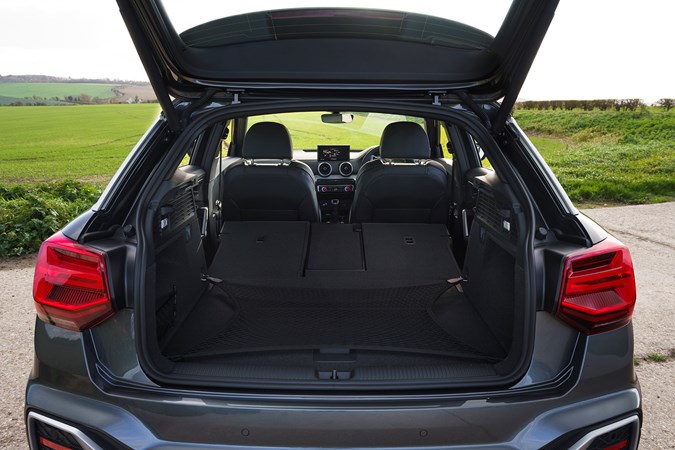
Luggage and boot space
The Q2’s boot measures 405 litres in capacity with the rear seats up, placing it behind the larger loadbays you’ll find in the Ford Puma, Renault Captur and Skoda Kamiq. But it’s a useful space with a height-adjustable floor, offering similar room to the newer Lexus LBX.
Fold the rear seats forward and you’ll boost load space to a more useful 1,050 litres. This is done with a conventional 60/40 split in most trims, though the seats don’t do anything clever like recline or slide back and forth. Opt for the Vorsprung spec (now discontinued and pretty rare) and you do at least get 40/20/40 split folding rear seats.
An electric boot is also fitted as standard, which is quite unusual for a car of this size.
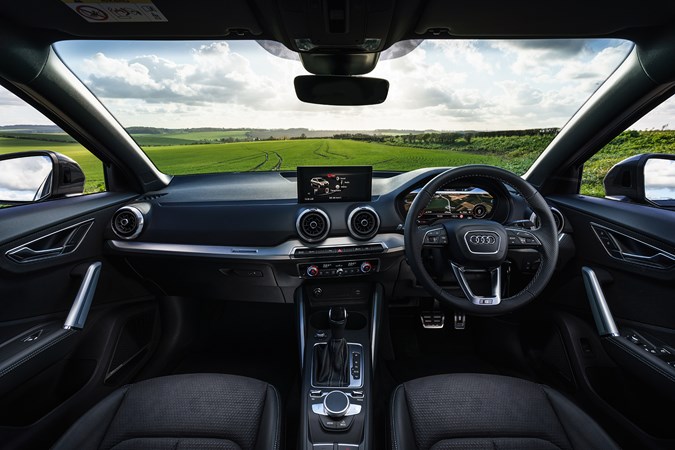
Interior
The cabin of the Q2 is probably its strongest asset with the quality of materials used impressing, even compared to newer rivals. Almost unchanged since 2016, the car has one of Audi’s oldest interior designs. While newer models eschew almost all physical buttons in favour of a pair of screens, the Q2 retains a high-set infotainment display and a centre console covered in switches.
That’s actually favourable for some. We’re not the biggest fans of Audi’s newer interiors, and the Q2’s physical climate controls and ergonomic layout makes it easy to use. Audi stopped putting the useful rotary selector for the touchscreen in its cars in 2022, however, which feels like a step backward. While the material quality lower down the interior of the car isn’t quite as good as some pricier Audis, it’s still one of the most solid and plush-feeling interiors in the class, so you won’t feel too short-changed.
Our New Cars Editor Alan Taylor-Jones ran a Q2 over an extended period, and concluded about the ageing interior: ‘I’d argue 2016 was about the high point of Audi interior design and quality. You’ll find far more soft touch plastics, sturdy controls and easy-to-use physical switches and dials than more recent offerings, while I find the infotainment system far less distracting to use on the move.’
The basic architecture of the dashboard is inherently logical and the four, swivelling round air vents lend a classy touch. Audi is offering a slew of personalisation on the Q2 and, depending on trim level, you can pep up the cockpit with a choice of body-coloured trim, silver accents and other highlights.
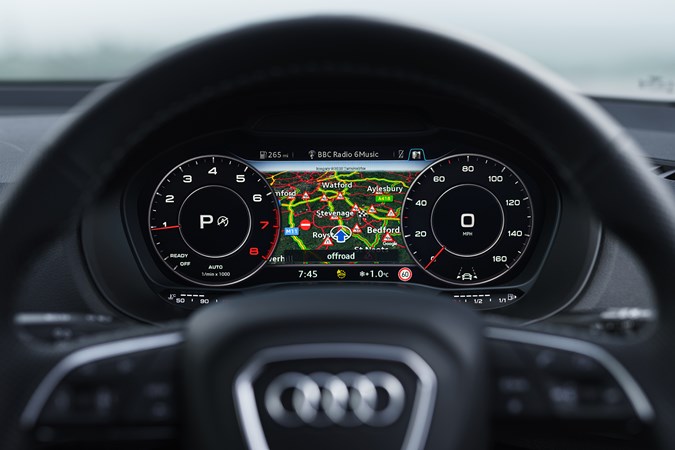
Infotainment and tech
All models since late 2020 have come with Audi’s Virtual Cockpit, replacing analogue dials with digital ones that can show a wealth of information. You can have a conventional layout with traditional dials and an information panel in the middle, a full screen sat nav map or displays that show music, phone or trip computer information more prominently. It’s well worth having.
All trims get an 8.3-inch infotainment system. Originally this was controlled purely by a dial near the gearstick, before moving purely to a touchscreen layout in its later years. By modern standards, the screen is quite small, though, and not the easiest to use on the move because of its small icons. Despite that, it’s well placed at the top of the dashboard without needing to look down from the road to see it.
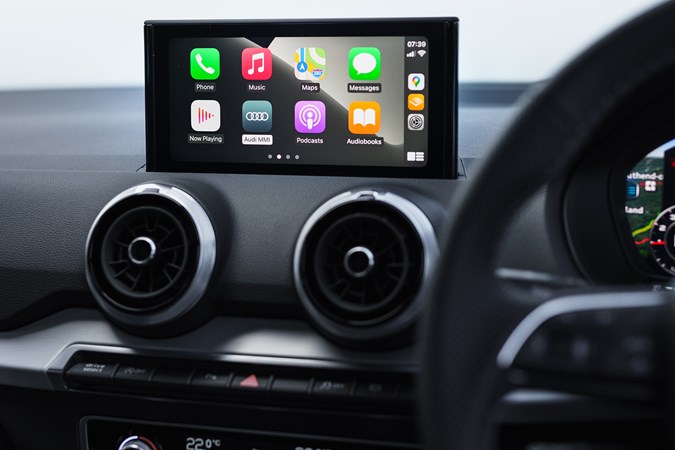
All models get Apple CarPlay and Android Auto (now wireless on new cars), a DAB radio, Bluetooth and USB connectivity as standard.
What’s it like to drive?
The Audi Q2 is based on the oily bits that underpin a host of VW Group small cars, including the VW Golf and Audi A3. Unsurprisingly, it drives rather like a compact, slightly taller family hatchback and certainly not like a lumbering SUV. It isn’t at all daunting to pilot around town and the car is easy to place on the road.
Engines for the regular Q2 range are limited to the 1.0-litre three-cylinder 30 TFSI and 35 TFSI, with the diesel and 40 TFSI now dropped from the range. The smaller of the two is nippy around town but can feel a little sluggish on the open road (0-62mph takes 11.2 seconds).
We’d recommend the 1.5-litre 35 TFSI as it’s the best balance between performance, running costs and price, whilst proving one of the most refined engines in the range. If you’re interested, 0-62mph takes a perfectly respectable 8.6 seconds.
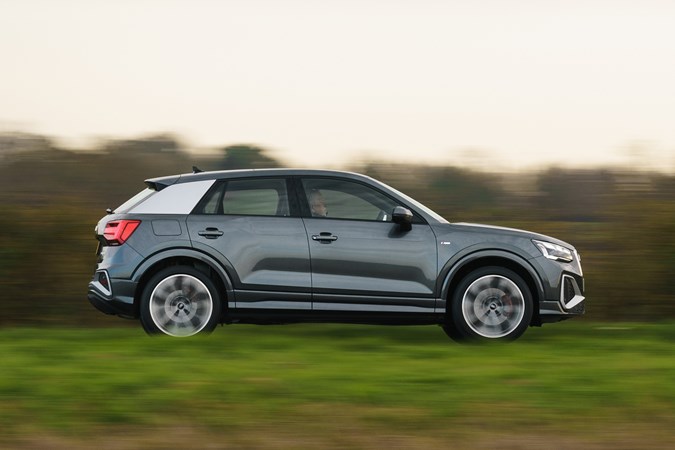
All Q2s come with progressive steering, which increases the speed the more you turn the wheel. That means it feels reassuringly stable on the motorway but doesn’t need much arm twirling when negotiating a multi-storey car park, for instance. Some of our testers like the system and some loathed it. Alan said: ‘The standard progressive steering has only two turns lock-to-lock and is designed to get quicker the more you turn the wheel. That’s great when you’re manoeuvring, but the system did feel a little nervous and unnatural, even at the end of our loan.’
Up the pace and it takes corners well, with its extra height over a similarly sized A3 hatchback being unnoticeable. The steering is weighty but satisfyingly precise, giving the driver a good sense of control. Meanwhile, the engine itself offers a glut of power from low engine speeds while proving more than quick enough for most drivers if you work it harder.
The vast majority of Q2s come with front-wheel drive and this will suit most owners down to the ground. Yes, you can chirrup the front wheels if you nip out of a damp T-junction, but traction for the most part is excellent even with the punchy turbocharged engines. Previously, you could get Audi’s quattro four-wheel-drive system on the 35 TDI and 40 TFSI, but since 2022 the only way of getting a new model with 4WD is with the sportier SQ2. If you live in a remote area and want the security blanket of improved traction, it’s worth considering.
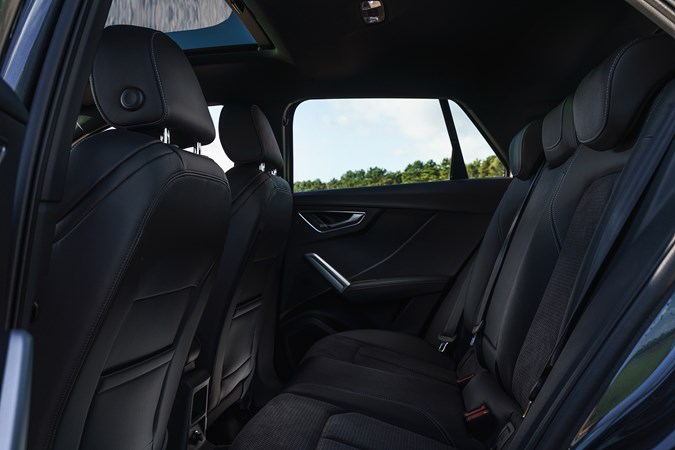
The Audi Q2 is an easy car to drive and can be pretty comfy, with a mature quality to the suspension that absorbs the worst road bumps to leave the cabin remarkably serene. This is best achieved on the smaller wheels, however – 17-inch rims are standard on the entry-level Sport trim and give the most cushioned ride. Every size up will damage the ride quality a little – Sport models come with 17-inch wheels, while S Line adds 18s, generating more patter over broken surfaces.
Sports suspension is standard on Black Edition models which, when combined with big 19-inch wheels, gives the harshest ride of all. Top spec Vorsprung also get 19-inch wheels but in conjunction with adaptive suspension that allows you to stiffen or soften the ride.
Hot SQ2 models get even lower and stiffer suspension with adaptive suspension again standard on Vorsprung models. They are on the firm side but not uncomfortably so, especially with the switchable suspension. The standard seats prove comfortable even after a whole morning spent in them and the range of adjustment in the front is sufficient for even very tall drivers.
Noise is well suppressed, although you should note the 1.0 TFSI is a buzzier, louder engine than its four-cylinder compatriots. The 1.5 TFSI is especially refined – we struggled to tell when its Cylinder On Demand system was operating in two- or four-cylinder mode.
What’s the hotter SQ2 like to drive?
For those more interested in MPH than MPG, the SQ2 is the fastest model in the range. It’s certainly rapid with a 4.8sec 0-62mph time, but it’s pricey to buy and doesn’t make the Q2 a particularly fun SUV as we’ll come onto shortly.
Like many other all-wheel drive cars in the VW Group, the SQ2 (below) provides safe and assured handling without much drama. Traction and grip levels are impressive in the bends – you really have to push the SQ2 hard for it to begin to lose grip – and the steering is quick to respond.
However, it doesn’t feel as involving as a Volkswagen T-Roc R, as its steering doesn’t feed back an awful lot to the driver. There’s little to complain about in terms of how quickly you can cover ground, though – the SQ2 is a very well-sorted car that gets around corners without drama.
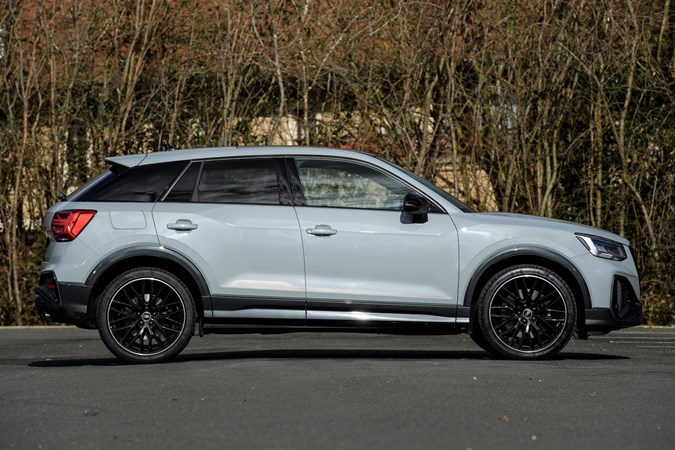
Ownership and running costs
No Q2 is particularly cheap by small SUV standards, although it does undercut the cheapest high-rise offerings from BMW and Mercedes. With no hybrid models in the range, CO2 emissions are nothing to write home about.
Fuel economy is competitive. Alan said, ‘I’ve seen 45mpg and above regularly from my 35 TFSI S Tronic. In fact, a particularly gentle run saw an impressive 48mpg average. However, accelerate with a modicum of enthusiasm a few times on your trip and that figure quickly drops to below 40mpg.’
However, the Q2 holds onto its value very well which helps make PCP costs surprisingly affordable. In terms of ongoing costs, the diesels are the most efficient but the 30 and 35 TFSI petrols will easily manage over 40mpg in the real world.
Safety
The Audi Q2 received five stars from Euro NCAP when it was tested in November 2016, scoring particularly well for adult occupant protection as well as child occupant protection. It’s worth pointing out that these tests have got significantly tougher, so its impossible to directly compare with newer small SUVs.
All models get mandatory features for new cars, including autonomous emergency braking, traffic sign recognition and lane keep assist. But if you want more than this, you’ll have to head to the options list. A reversing camera is included as part of the £1,295 Technology Pack, but adaptive cruise control is no longer available on new cars.
What models and trims are available?
There are just two engines to choose from in the new Q2 range, both being petrols and badged the 30 and 35 TFSI. Diesel models were discontinued in 2022, but proved quite popular in the Q2’s earlier years so plenty will be for sale. If you’re after a much quicker (and more expensive) Q2, don’t forget the pleasingly rapid SQ2 model. Although it’s getting on and isn’t the best fast small car to drive, it’s still good fun thanks to having so much power.
There are three trim levels to choose from. The entry-level Sport model kicks things off, with standard features including 17-inch alloy wheels, an electric boot, digital instrument cluster and LED headlights. The S line trim adds sharper looks with its sportier bodykit and larger 18-inch alloy wheels, while also getting LED interior lighting and part leather seats. The top-spec Black Edition gets large 19-inch alloy wheels and a host of gloss black styling elements to complement the look.
Read on for our Audi Q2 verdict and what it’s like to live with one.
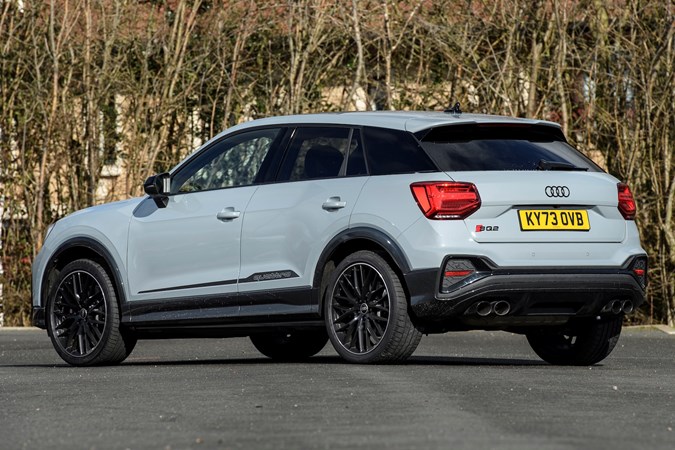


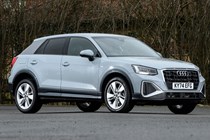
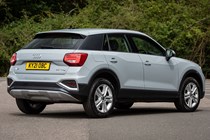


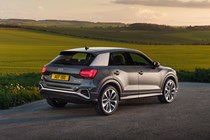

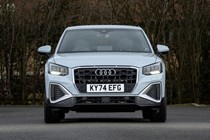

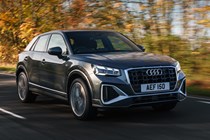
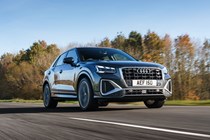
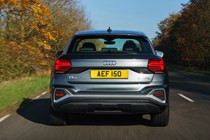
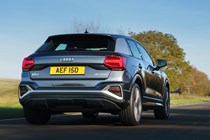
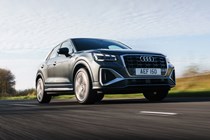

.jpg)
.jpg)
.jpg)
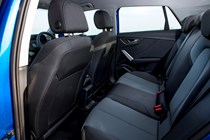

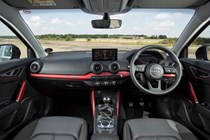
.jpg)


.jpg)
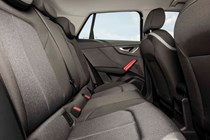
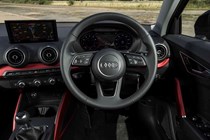
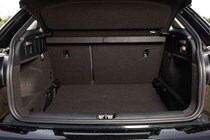
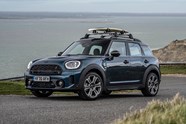

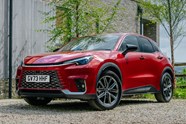
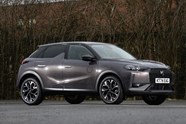
















.jpg?quality=50)
.jpg?quality=50)
.jpg?quality=50)



.jpg?quality=50)


.jpg?quality=50)


